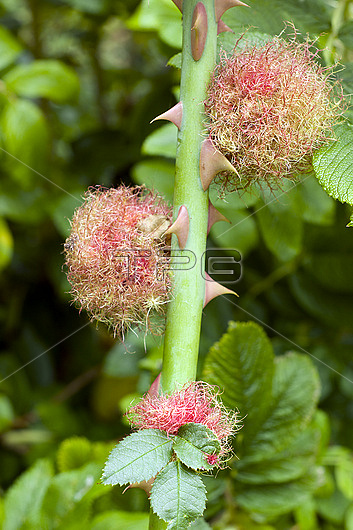
Maturing bedeguar galls along the stem of a dog rose, Rosa canina. The picture shows three large galls, each attached to a leaf. A small gall is visible on the leaf surface at picture bottom. The galls arise when a female gall wasp, Diplolepis rosae, lays eggs within the leaf tissue. The gall develops into a woody structure around a chamber containing the wasp larva, and is covered with filamentous outgrowths (red and white here; the Robin's pincushion). Large galls such as those here contain several chambers. Most D. rosae females do not require a male in order to reproduce. Instead they lay diploid eggs, a lifestyle called thelytoky. This reproductive behaviour is due to infection by Wolbachia bacteria. Wolbachia infects many species of insects. It can suppress the replication of viral pathogens carried by some, and has been used as an agent to control mosquito borne Dengue virus
| px | px | dpi | = | cm | x | cm | = | MB |
Details
Creative#:
TOP25967537
Source:
達志影像
Authorization Type:
RM
Release Information:
須由TPG 完整授權
Model Release:
N/A
Property Release:
N/A
Right to Privacy:
No
Same folder images:

 Loading
Loading